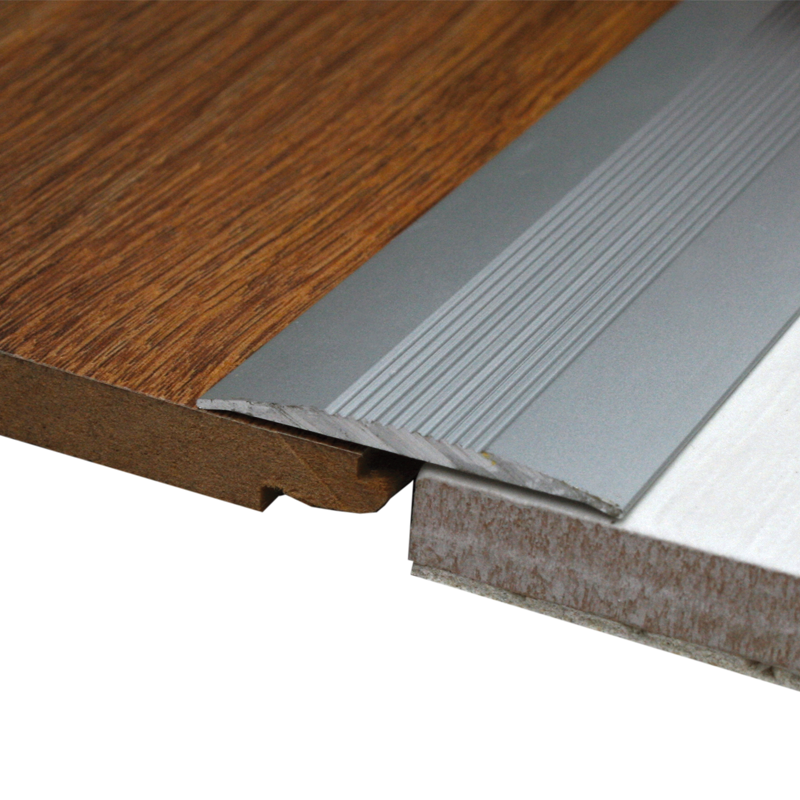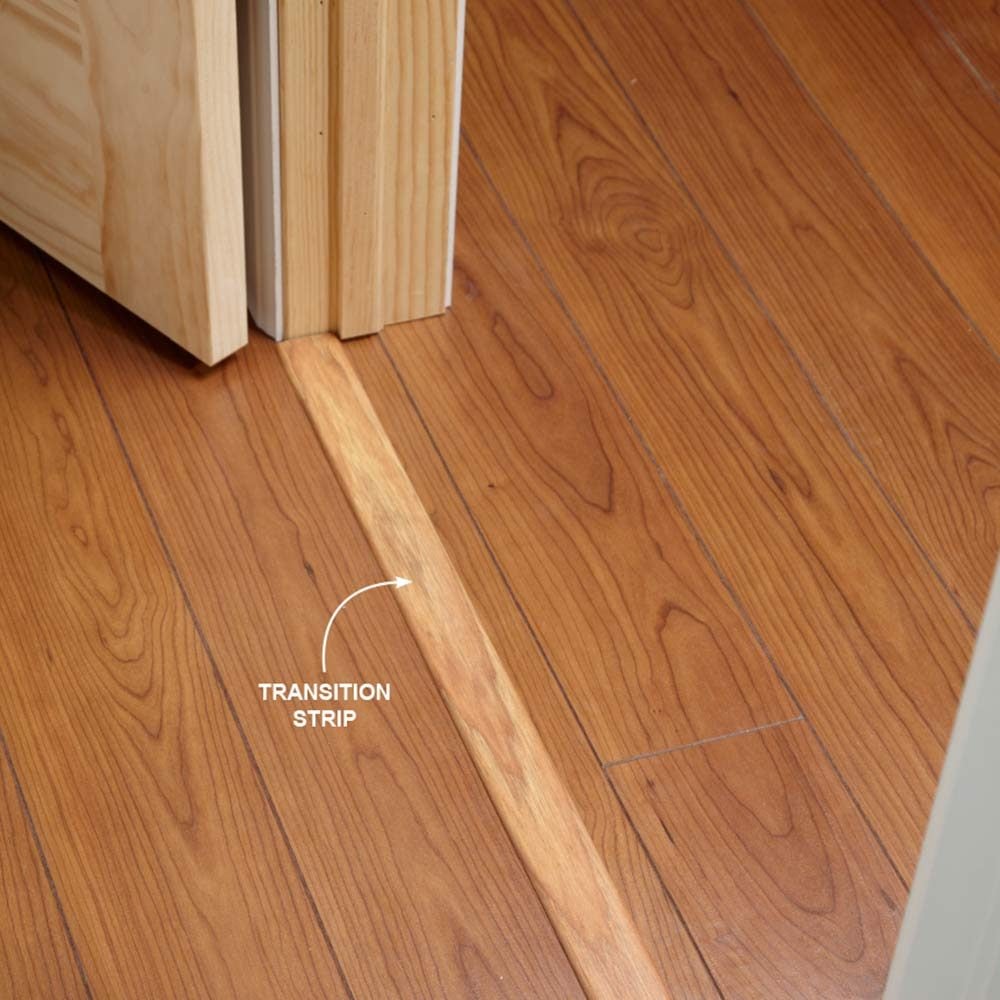Are you planning to install new vinyl flooring in your home and wondering whether you need those extra strips that seem to magically bridge the gap between different floor surfaces? These strips, known as transition strips, are more than just decorative additions; they play a crucial role in maintaining the integrity of your flooring and ensuring a seamless transition between different floor types.

Image: www.northantstools.co.uk
Transition strips are essential for creating a smooth transition between vinyl flooring and other surfaces like tile, carpet, or wood. They serve a variety of functions, including preventing tripping hazards, minimizing wear and tear on flooring, and enhancing the overall aesthetic appeal of your home.
Understanding the Importance of Transition Strips
Preventing Tripping Hazards
Imagine stepping from your sleek vinyl kitchen floor onto your plush carpet in the living room. The difference in height between the two surfaces might feel subtle, but it can become a serious tripping hazard, especially for children and older individuals. Transition strips create a smooth, gradual slope that eliminates this risk, making your home safer for everyone.
Minimizing Wear and Tear
Transition strips act as a protective barrier between different types of flooring. They help minimize the impact and wear and tear on the edges of your vinyl flooring, extending its lifespan. Without these strips, the edges of your vinyl might become frayed, chipped, or damaged, leading to premature replacement.

Image: viewfloor.co
Enhancing Aesthetics
Beyond functionality, transition strips can significantly enhance the aesthetics of your home. They offer a variety of styles, finishes, and colours that seamlessly blend with your existing decor. Whether you prefer a minimalist look or want to add a touch of elegance, there’s a transition strip to complement your flooring and create a visually pleasing transition between your rooms.
Choosing the Right Transition Strips
With a vast array of options available, choosing the right transition strip can seem daunting. However, considering these factors can simplify the process:
Material
Transition strips are available in a variety of materials, each with its own advantages and disadvantages. Common materials include metal, wood, and vinyl. Metal strips are durable, rust-resistant, and offer a modern aesthetic. Wood strips provide a classic, warm look, while vinyl strips are budget-friendly and offer a wide range of colors and styles.
Finish
You can select a finish that complements your flooring and decor. Common finishes include brushed, polished, and textured options. Brushed finishes offer a subtle, understated look, while polished finishes add a touch of elegance. Textured finishes are ideal for areas with high traffic, as they provide a non-slip surface.
Color
Choose a color that blends seamlessly with your flooring or creates a striking contrast to highlight the transition. If you’re looking for a subtle look, choose a color that closely matches your existing flooring. For a bolder statement, opt for a contrasting color that adds a touch of personality to your space.
Profile
Transition strips come in a variety of profiles, including T-shaped, reducer, and threshold profiles. T-shaped profiles are suitable for bridging gaps between floors with different heights. Reducer profiles are perfect for transitioning from a higher floor to a lower floor. Threshold profiles are ideal for creating a barrier between floors while maintaining a uniform height.
Installation Tips
Installing transition strips is a relatively simple DIY project that can be completed with basic tools and some handy tips:
Measure accurately
Before you start installing, ensure you carefully measure the length you need for the transition strip. A precise measurement will prevent any gaps or overlaps, ensuring a smooth transition between your floors.
Prepare the surface
Ensure the surface where the transition strip will be installed is clean and free of debris. Roughen up the surface if necessary to provide better adhesion for the adhesive or screws.
Use a level
Using a level will ensure the transition strip is installed evenly, preventing any uneven transitions or tripping hazards. Start by securing the transition strip at both ends with a nail or screw, then gently stretch it across the floor while maintaining a level surface.
Cut to size
If your transition strip needs to be cut to size, use a saw with a fine-tooth blade to make a clean, precise cut. Avoid using a saw with a coarse blade, as it can leave jagged edges.
Secure it properly
You can secure the transition strip using adhesive, screws, or a combination of both. Follow the manufacturer’s instructions for the best method and ensure the transition strip is properly secured for a safe and long-lasting installation.
When to Skip Transition Strips
While transition strips are generally recommended for creating smooth transitions between different flooring types, there are some instances where you may not need them. For example:
Similar height
If the two floors you’re transitioning between are at the same height, you can skip the transition strip. Ensure the edges of the flooring are flush and leveled to avoid any potential tripping hazards.
Small gap
If the gap between the two floors is very small, a transition strip might not be necessary. However, ensure the edge of the vinyl is protected from potential damage. You can use a sealant or caulking to prevent any debris from accumulating.
Open floor plan
In an open floor plan, where the transition between floors is less pronounced, you might not need a transition strip. However, consider whether the different flooring types complement each other aesthetically and choose a transition strip accordingly.
Do You Need Transition Strips For Vinyl Flooring
Conclusion
Transition strips are essential for creating a seamless and safe transition between different floor types, particularly when dealing with vinyl flooring. They prevent tripping hazards, minimize wear and tear, and enhance the aesthetic appeal of your home. By carefully selecting the right transition strip material, finish, color, and profile, you can create a smooth, elegant, and safe transition that enhances the overall look and flow of your space. So, before you install your beautiful new vinyl flooring, remember to consider the vital role of transition strips and choose the perfect ones to complete your flooring project.





